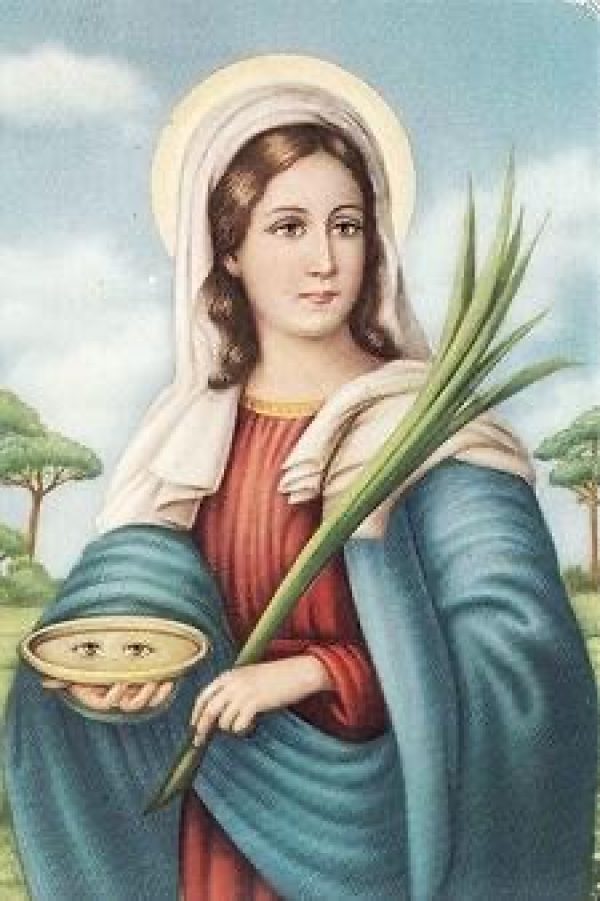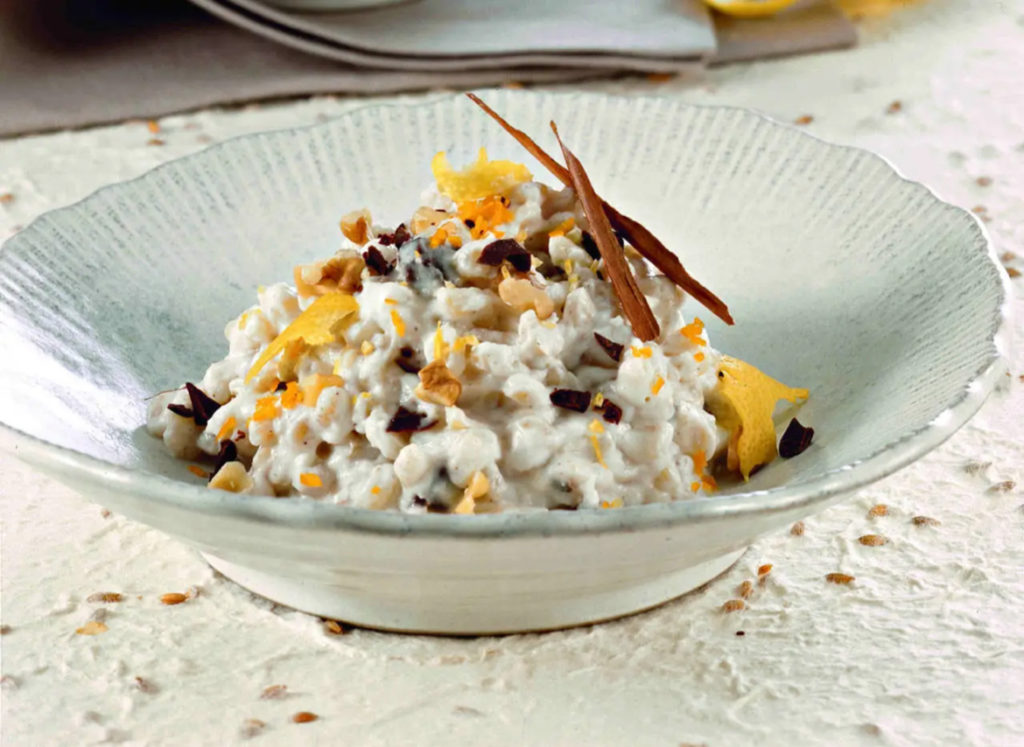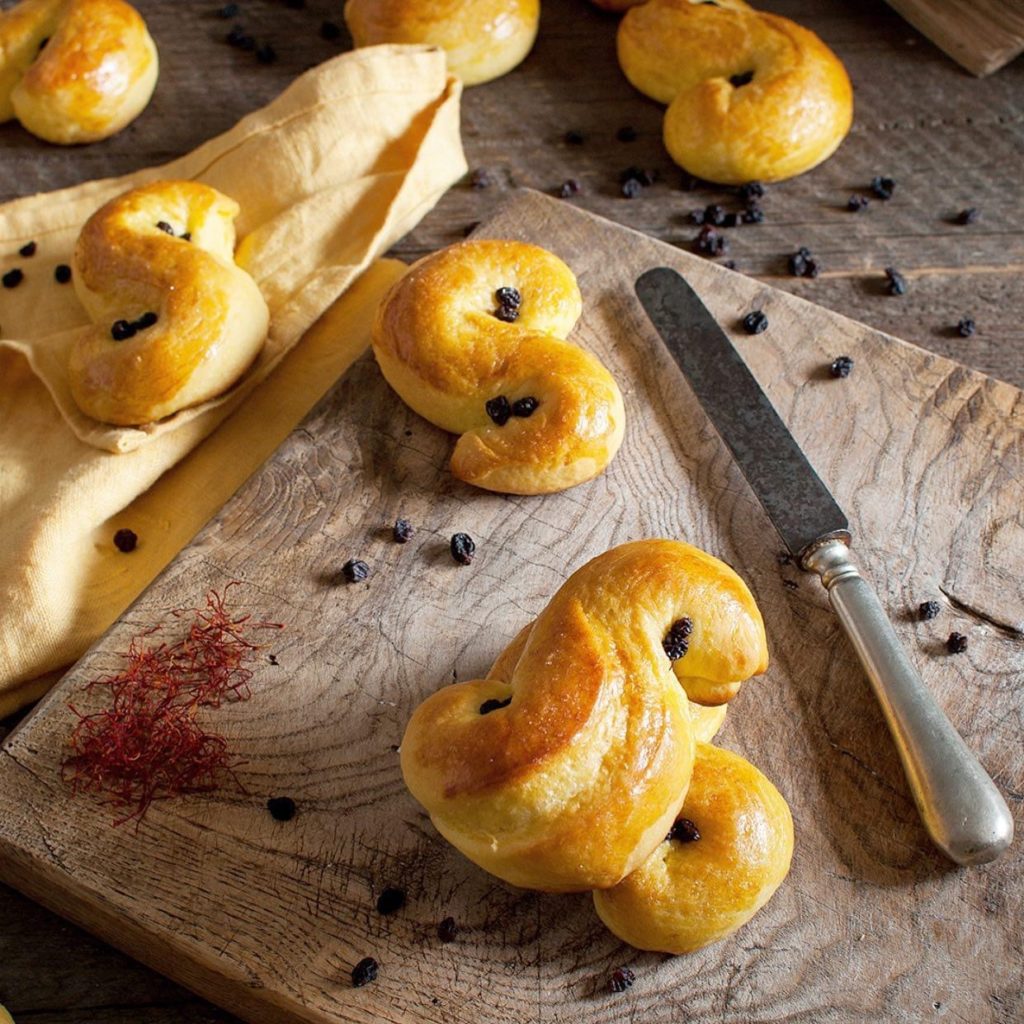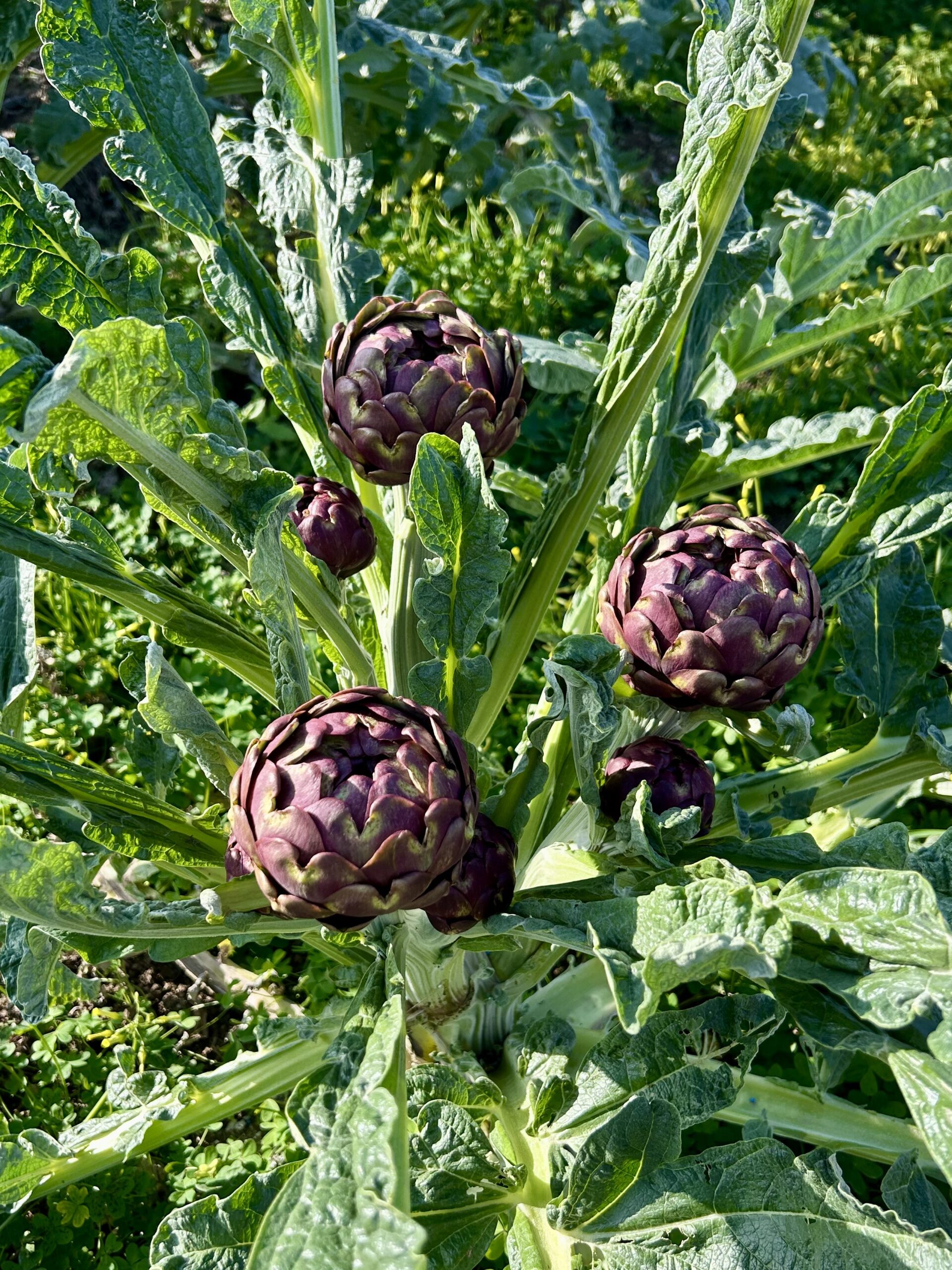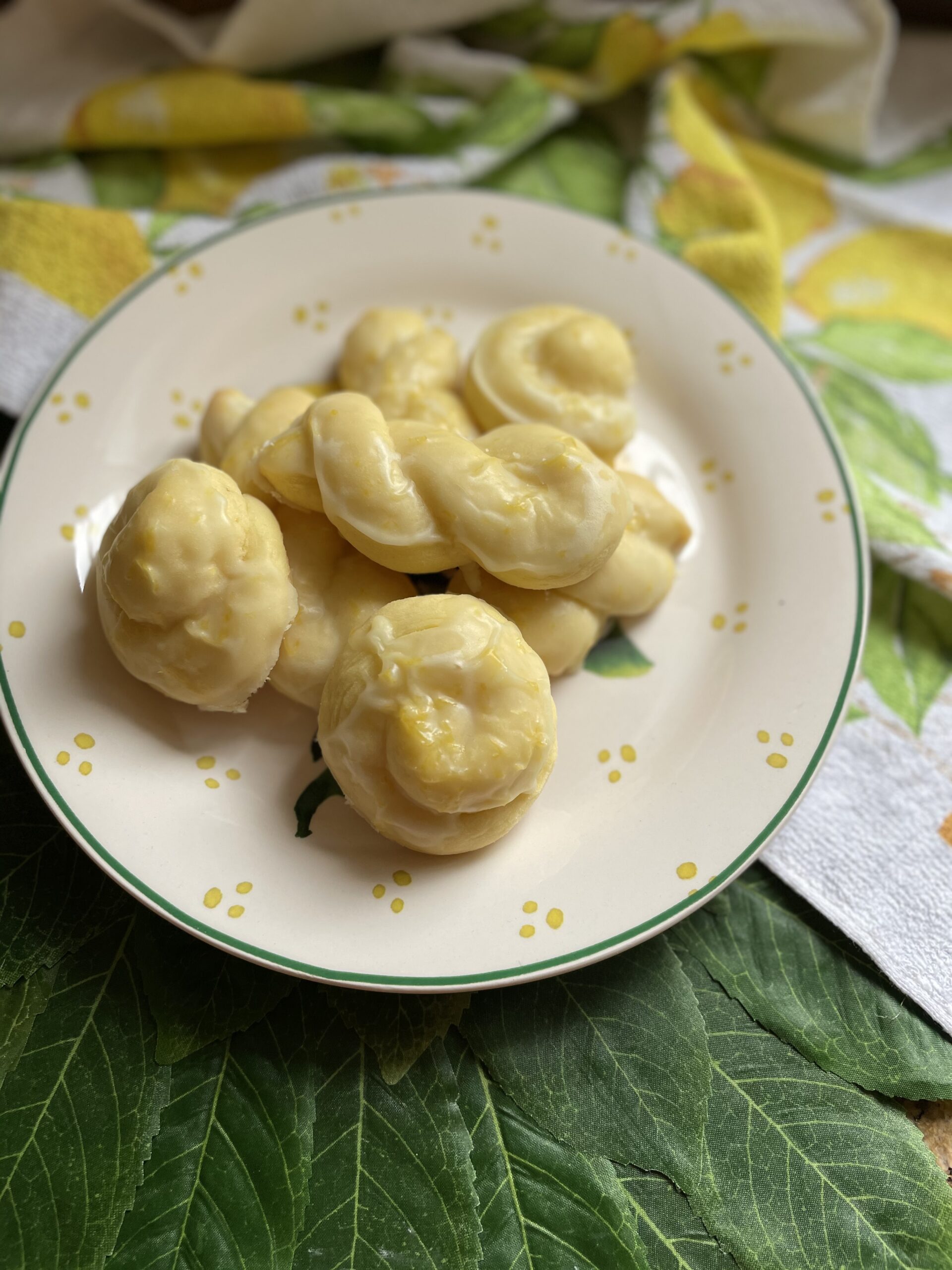December 13th is the feast day of Santa Lucia (St. Lucy) where Italian lore says that very early in the morning on this day, she, a donkey and an escort named Castaldo, deliver gifts to good children and ashes to bad children. Children are asked to leave coffee for Lucia, flour for the donkey and bread for Castaldo. They must not watch Santa Lucia delivering these gifts, or she will throw ashes in their eyes, temporarily blinding them.
Like many of the feast days that fall during the holiday season, it is honoured in a number of delectable ways. In Sicily, from where she hails, she is highly revered, and a dessert known as cuccia is prepared (a type of rice pudding made with wheatberries).
In Puglia, Gli occhi di Santa Lucia (eyes of Saint Lucy) are prepared for the celebration; they are a sweet version of the taralli that the region is famous for, and are said to resemble eyes, as Lucia is the patron saint of the blind. The cookies are made with a combination of flour, white wine, and olive oil. The dough is cut into strips, then connected into rings and baked. The cookies are then coated with a glaze made from water, lemon juice, and powdered sugar.
A Swedish tradition has also been widely adopted across the peninsula (including Calabria) which is that of preparing Lussekatter or Pane di Santa Lucia.
“S” shaped saffron-scented sweet buns dotted with raisins are prepared and enjoyed for breakfast on the morning of December 13th. The rolls are lightly sweet, buttery, and vibrant yellow from the saffron-infused dough. There are two theories around the coloring of the dough, the first suggests that the sweet buns were colored with luminous yellow saffron spice to keep the devil away; the second is that the saffron is to symbolize the sun and the light.
Their traditional spiral shape on other hand is an ancient symbol for the sun and life. And the raisins are meant to be the eyes as Santa Lucia is the protector of sight, (her name, Lucia from the Latin word “lux” which means “light”).
While Lucia is a Sicilian Saint, she is also highly celebrated in Calabria. Across the region, masses are held in her honour and large bonfires, known as I Fuochi di Santa Lucia, are lit. It is also customary in Calabria to distribute dried figs on her feast day; the figs are part of the “9 cose di Santa Lucia” (9 gifts of Saint Lucy). Nine varieties of figs, grains and legumes are gifted to the needy. Many tables are adorned with 13 dishes (representing the date of her feast) which include new wine, fruit and sweets (including the aforementioned sweet bread).
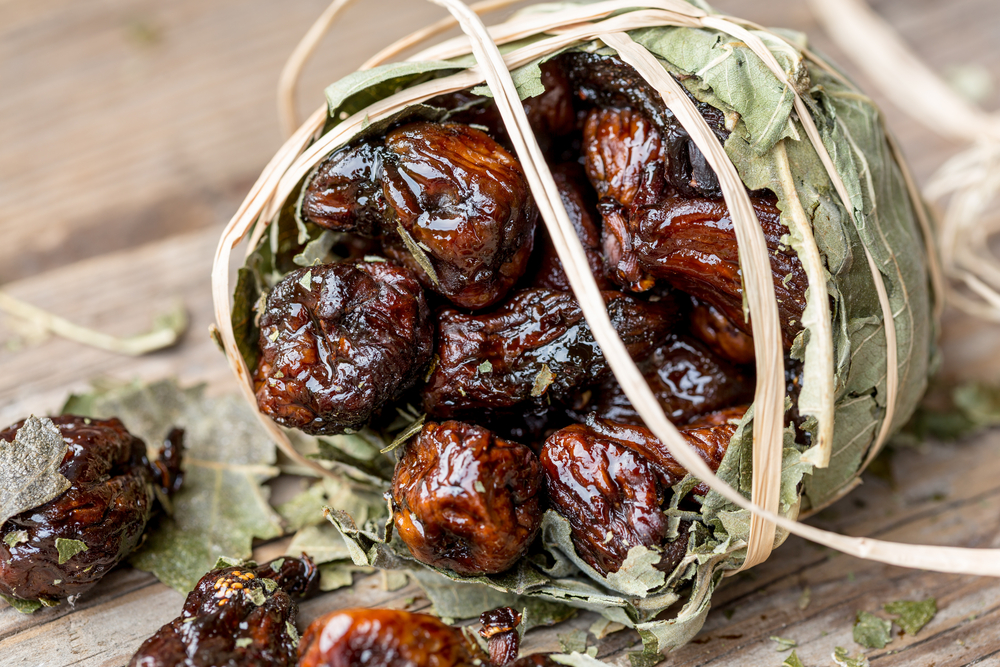
This feast day is a joyous celebration, a time for gathering with family and friends to enjoy irresistible regional specialties, and light the way to Christmas festivities. Buona Festa di Santa Lucia e Buon Appetito!

